The views expressed in our content reflect individual perspectives and do not represent the authoritative views of the Baha'i Faith.
Born on August 5, 1883 (Birth Record; WWI Draft Registration Card, August 5, 1882; Death Certificate, August 25, 1944) to poor parents in Knoxville, Tennessee. Henderson helped support his family by working as a “bootblack,” newspaper carrier, and janitor, before pursuing his higher education.
Obviously bright and motivated, he earned certificates and degrees from Cuyahoga Teachers College, Roger Williams University, Dyer’s College of Commercial Law, Spencer’s School of Commerce, Phonographic Institute, and a dozen other institutions (The Pittsburgh Courier (September 21, 1929) A2).
On January 1, 1912, Henderson, whose material wealth amounted to just $2.20 and two used typewriters, founded Henderson Business College in Knoxville in the severely segregated (“Jim Crow”) South, as a two-year institution for African-Americans. By 1914, Henderson had gained a reputation as a “wizard” of typing and shorthand. In fact, Henderson developed a system of shorthand for which he wrote a textbook.
In the autumn of 1915, the well-known African-American Baha’i teacher Louis Gregory met Prof. Henderson in Nashville, and introduced him to the Baha’i Faith. According to Gregory (“Faith and the Man: The Remarkable Story of Henderson Business College, a Baha’i Enterprise,” The Bahá’í World Vol. VIII (1938–1940), pp. 900–903), Prof. Henderson headed the Business Department of Roger Williams University at that time.In 1916, at the end of the academic year, Prof. Henderson resigned his position, and moved to Memphis, at the invitation of two colleagues.
Over the next two years, Henderson was instrumental in expanding the Memphis Baha’i community, as Gayle Morrison relates:
In September 1917 Louis Gregory reported that the Memphis Baha’i community consisted of sixty people: “3 white [and] 57 colored.” “Henderson is the ‘teachingest’ busy man I ever saw,” he wrote to Joseph Hannen during a visit to Memphis two years later. “He seems to take some time to mention the Cause to every one he meets. In this way he has interested a number of whites whom he meets in a business way, some of whom have attended the meetings. With all the eight teachers in his school Baha’i, the students find the atmosphere full of it. A short time later “the entire faculty and student body” addressed a letter to Abdu’l-Baha. – Gayle Morrison, To Move the World, p. 104.
Henderson Business College became a successful enterprise. A member of the National Council of Business Schools and the National Rehabilitation Association and recognized by Tennessee’s State Board of Education, the college offered “Seven Standard Courses” of study, including programs in “Shorthand, Typewriting, Bookkeeping, Salesmanship, Multigraphing, Commercial Law.”
In December 1920, the College faculty, who were all Baha’is, wrote a letter to ‘Abdu’l-Baha, which Louis Gregory had delivered to its recipient. In a tablet, dated April 9, 1921, addressed to Louis G. Gregory, Abdu’l-Baha referred to Henderson Business College as a “Baha’i College”:
Thy letter that thou hast written in the beginning of December, 1920, has been received. Its contents contained very good news, indicating that his honor, Prof. George W. Henderson, has established a Baha’i College in one of the cities of the South; that now that college has developed, and the students are studying the Divine Teachings and also the necessary sciences and arts. That revered professor has been and will always be favored. …
His honor, Prof. Henderson, has in reality arisen in the service of the Kingdom. The fruits of this service are eternal bounty and everlasting life. Through the graces of God do I cherish this hope, that he at every moment will receive a new confirmation. — Abdu’l-Baha, quoted in The Bahá’í World Vol VIII (1938–1940), p. 901.
That this was a “Baha’i College” is borne out by the fact that not only were the faculty Baha’i, but the curriculum integrated instruction in Baha’i ethics with professional training.
A decade later, the the College faculty wrote a letter to Shoghi Effendi, “Guardian” (leader) of the Baha’i Faith at that time.
In 1929, Louis Gregory paid a visit to the college, and noted: “The Greatest Name and the portrait of the Master [Abdu’l-Baha] still adorn the walls of the college.”
A busy man indeed, Prof. Henderson was man of many talents. He applied his gifted intellect as a writer, as exemplified in hi1929 typing textbook that employed Henderson’s “miracle system of mind training” (The Pittsburgh Courier (Sep 21, 1929) A2).
In 1936, Henderson was nominated for the position of Minister to Liberia during the Roosevelt administration. Although another was appointed, Henderson became well-known in diplomatic circles.
At the same time, Prof. Henderson was a Baha’i enkindled with spiritual fire. He first appears on the Memphis Baha’i list in 1927, where he was consistently listed in subsequent years. Prof. Henderson died on December 24, 1944. After his passing, Shoghi Effendi, the Guardian of the Baha’i Faith, paid tribute to this noble soul:
He (the Guardian) was sorry to hear Prof. Henderson had passed away. No doubt he will now find himself in that happy state promised by the Beloved as the reward of His faithful servants. The Guardian will pray for his spiritual advancement and that his deeds in the South may bear fruit.
The Pittsburgh Courier (July 17, 1937, p. 22) acclaimed Henderson Business College as “the world’s largest commercial school for the Negro youth.” In the fall of 1947, Memphis minister Reverend L.O. Taylor produced a film documentary about Henderson Business College.
Henderson Business College closed in 1971. The former school campus no longer exists, and is now a parking lot for Mt. Olive Cathedral CME Church.
But the memory of Prof. Henderson will abide in Baha’i history. Gregory writes: “‘Up From Slavery’ is one thing; but up from nothing is another.” In 1937, Prof. Henderson wrote that “the man is best educated who is the most useful” (The Pittsburgh Courier (July 17, 1937) p. 22). Throughout his life, Prof. Henderson lived up to his personal motto: “He profits most who serves best.”
Thanks to Lewis Walker, National Baha’i Archives, for the information that he kindly provided.
Additional links:
Lost Memphis: Henderson Business College
Update: Henderson Business College
Photo credits:
Prof. Henderson’s photo – National Baha’i Archives, Baha’i National Center, Evanston, IL. Courtesy of Lewis V. Walker, Archivist.
©2014 by Christopher Buck.
You May Also Like
Comments



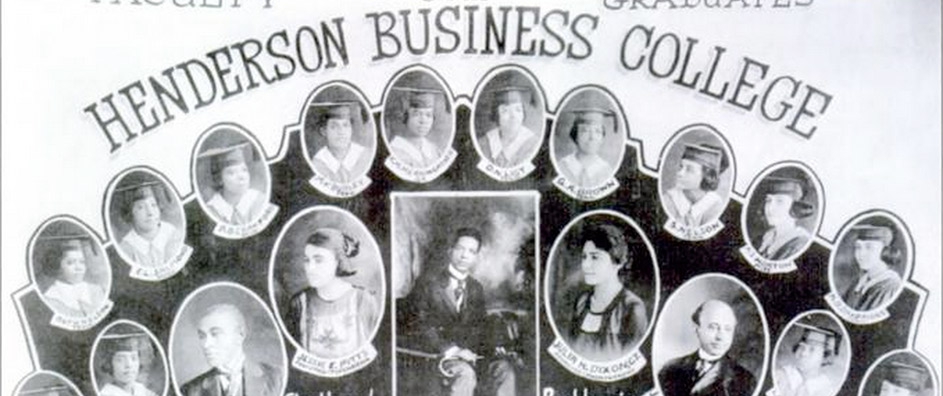
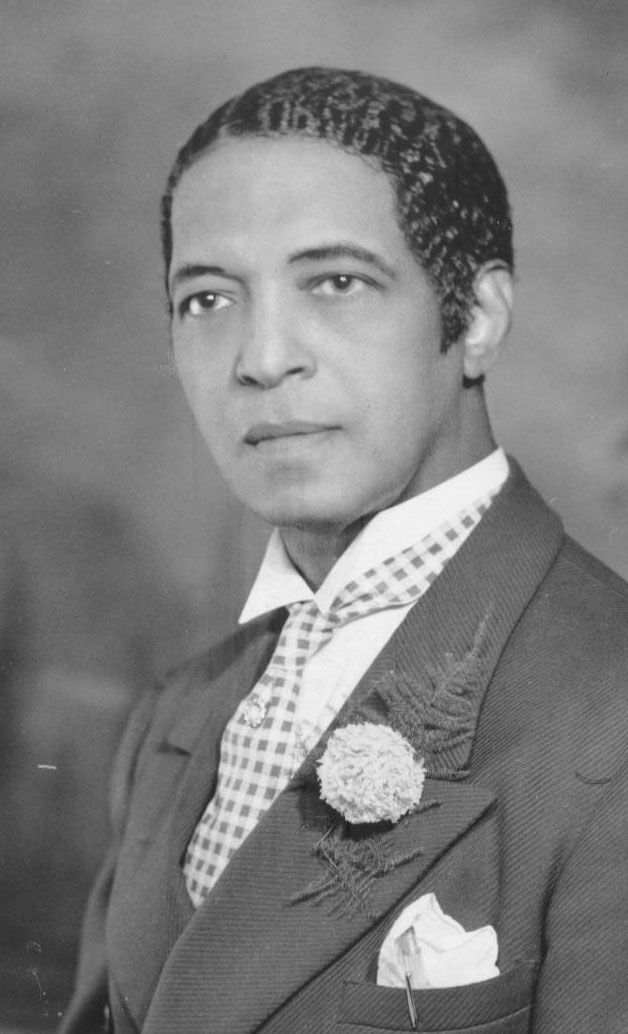
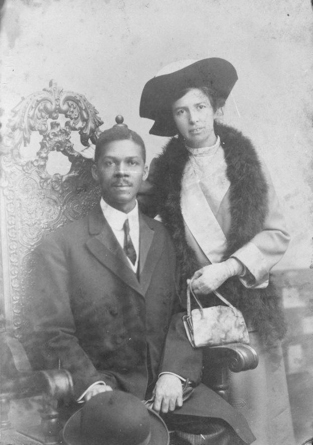
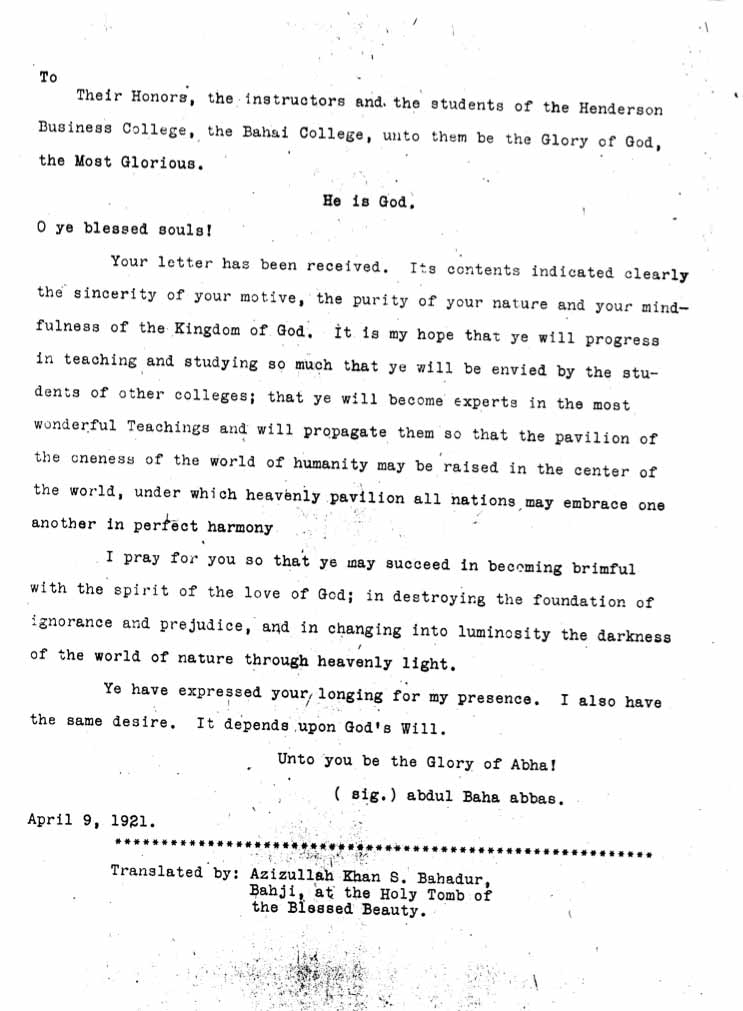
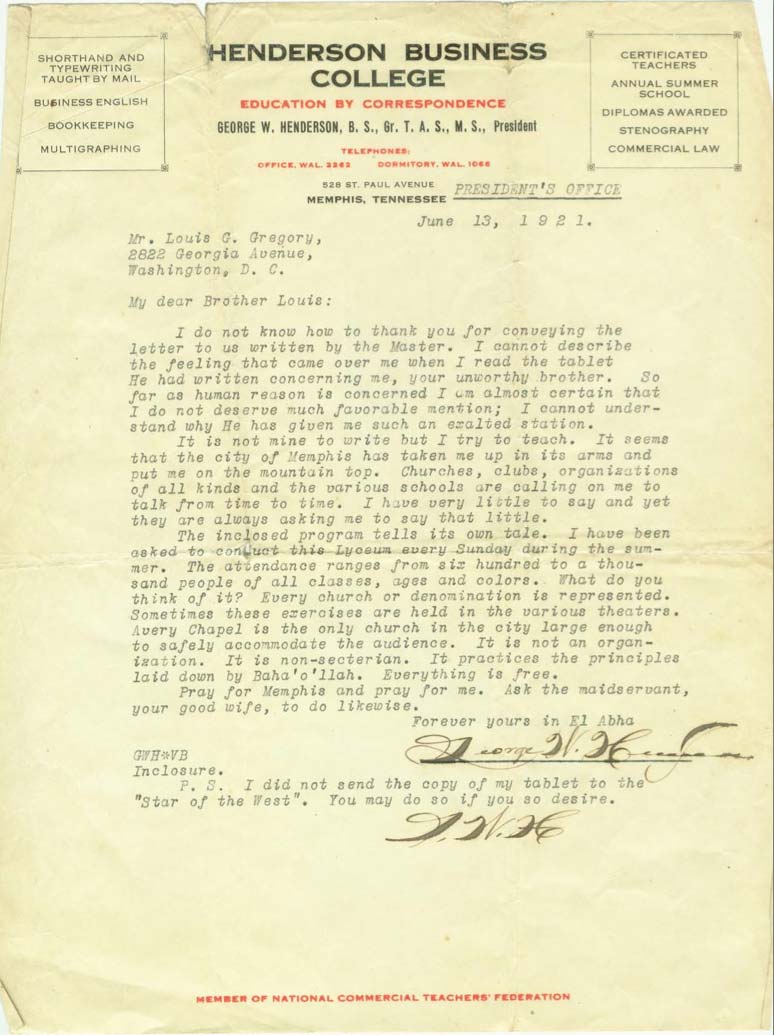













shineth". forth.
Something that is not easily seen is the improvement made in the lives of the students, how they in turn found a better living and raised their children in better circumstances and how that affected subsequent generations. Prof Henderson is a very inspiring person.
Thanks Dr Buck for putting this page together.